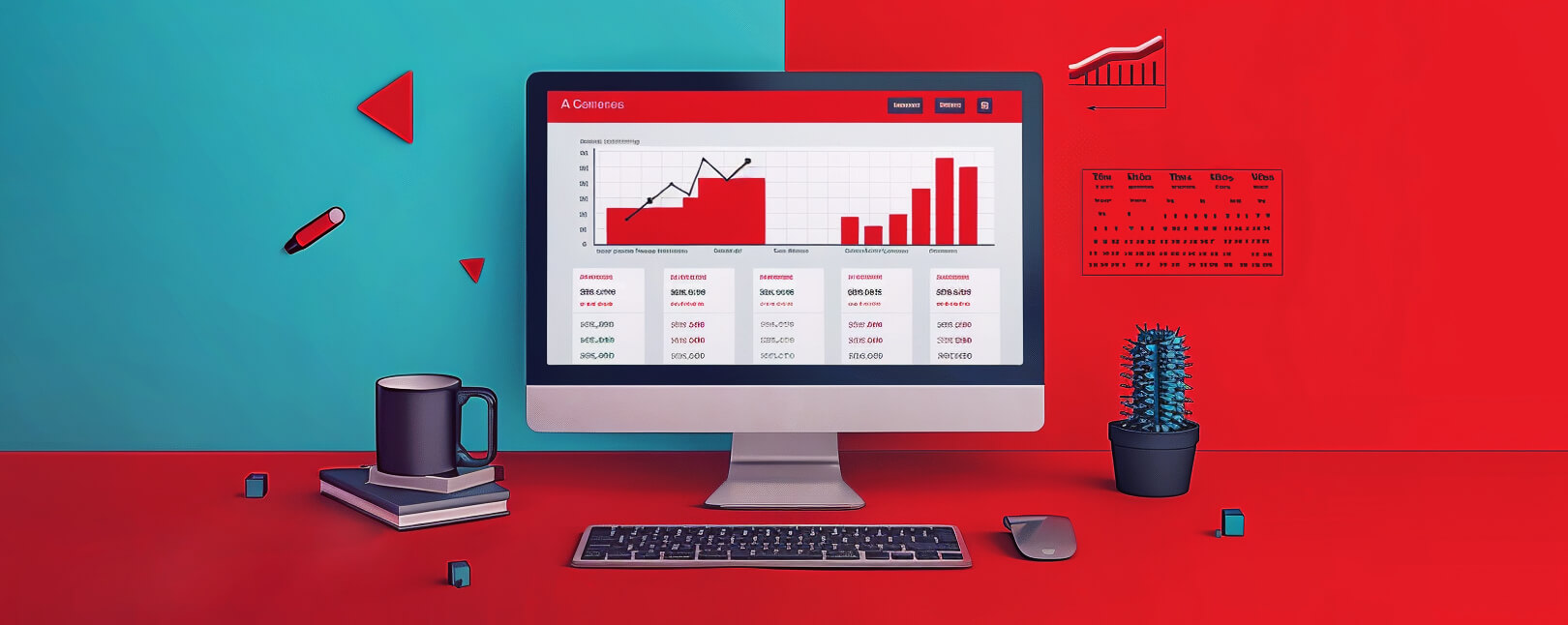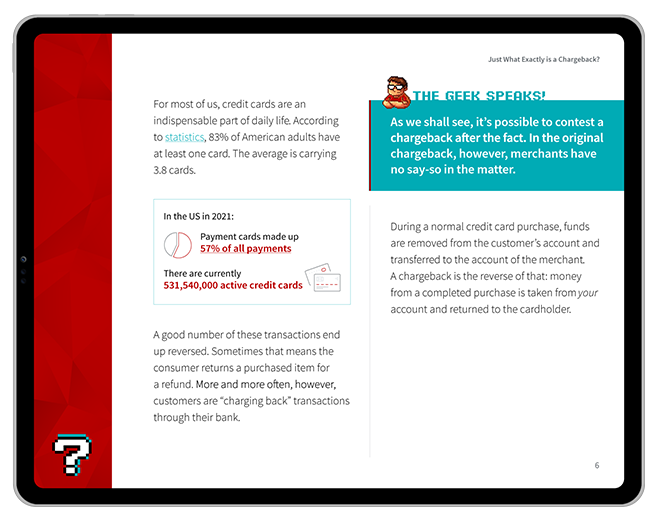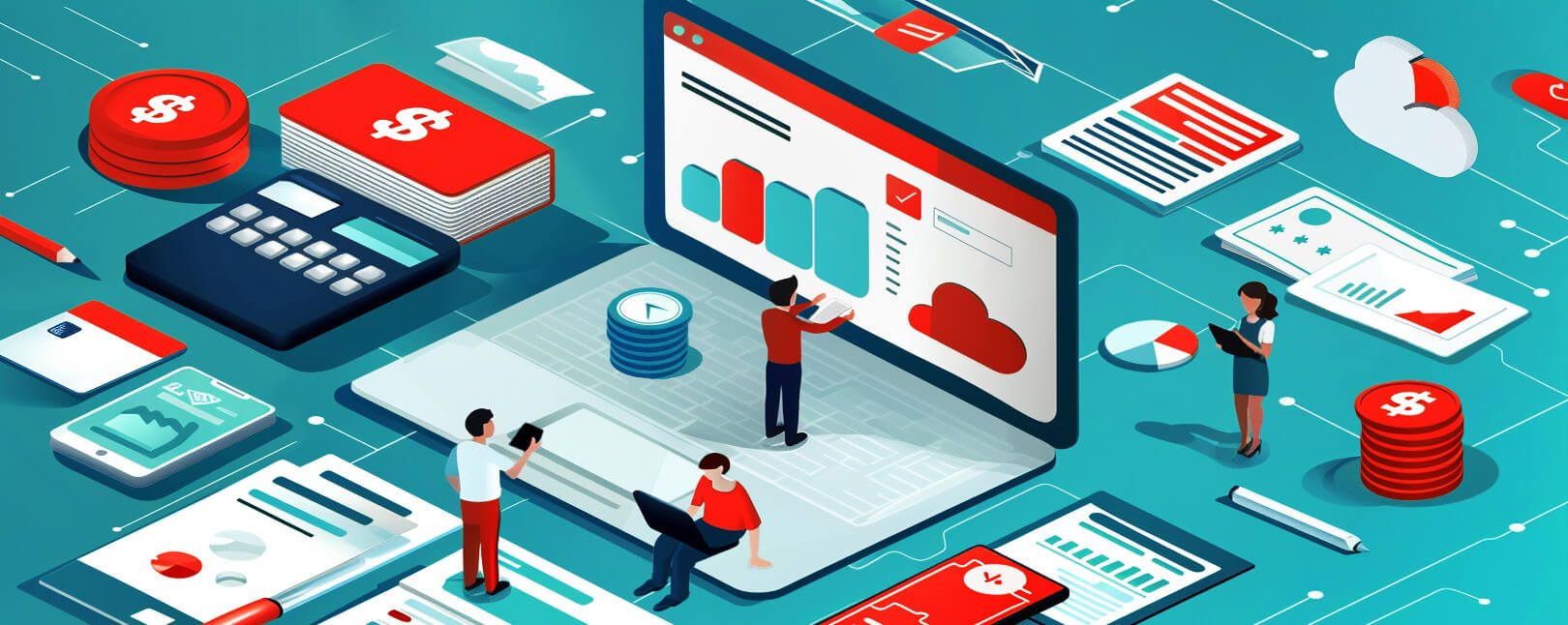The Subscription Billing Model: Why the Benefits (Usually) Outweigh the Liabilities
Consumers and merchants don’t always see eye-to-eye. One thing most parties will agree on, though: they love the subscription billing model.
This billing method offers advantages for both merchants and customers. Buyers get indefinite access to the products or services they enjoy most, and often for less than the cost of a one-time purchase. Merchants get return business, built-in payments, and locked-in clientele.
On the surface, subscription billing models are a dynamic and lucrative approach to eCommerce. Beware, though: these benefits come hand-in-hand with additional liabilities.
Recommended reading
- Mastercard Recurring Payments: Free Trials, Billing & More
- Know the Visa Recurring Payments & Subscription Guidelines
- Visa Account Updater: What it Does & How it Works
- FTC Publishes “Click-to-Cancel” Rule: Here’s What to Know
- The Top 12 Subscription Billing Platforms of 2024
- The 2024 Guide to Subscription Billing Software
What is a Subscription Billing Model?
- Subscription Billing Model
A subscription billing model is a sales strategy allowing a merchant to bill customers on a recurring basis in exchange for indefinite use of a product or service. This is in contrast to one-time billing, as in a typical purchase.
[noun]/səb • skrip • SHən • bil • ing • mä • dl/Subscription billing models exist to provide goods and services to customers to customers through smaller, incremental payments rather than through larger lump sum payments. Customers get access to what they want, and merchants get a steady revenue stream. This can be a mutually beneficial relationship.
Given the popularity of services like HBOMax, Netflix, and Hulu, most people are fairly familiar with the subscription billing model by now. This has encouraged many businesses to expand their service offerings in order to compete.
Common Subscription Billing Models
A primary attraction of subscription billing models lies in their adaptability. Even within the same sector, two companies offering similar products to the same demographic might adopt distinct subscription billing approaches.
These models often fall into fixed or variable categories, similar to other types of recurring payments. For instance, a monthly subscription for a curated box will generally have a consistent price, whereas a meal delivery subscription's cost may vary weekly depending on the number of meals ordered.
That said, there are four main pricing models that merchants typically use to attract and retain subscribed customers. These are:
Fixed / Flat-Rate Pricing
Pricing is based on a single product, a fixed set of features, or a fixed price per month.
Tiered Pricing
Pricing is based on a tiered system (i.e., basic to premium), with more features added as the price increases.
Per Unit/User
Pricing is selective according to the number of users (this model is most often employed by online software systems).
Usage
Pricing is based on the amount of data transmitted or the CPU power used each month.
Most merchants tend to combine one or two of the models above. They also often provide incentives to upgrade to higher commitment levels. We can divide these popular methods into three categories. Let’s break them down now:
Ongoing Subscription Model
The ongoing subscription model (also known as “limited promotion to subscription”) operates by hooking customers with an introductory trial period. Then, after this period ends, payment is required to maintain service.
Many companies that use this model also tie in tiered pricing for various levels of service. Streaming services like Hulu, for example, may offer ad-free or premium versions of their streaming service on an escalating payscale.
Fixed-Price Model
This one sounds straightforward but is actually quite tricky. With this model, a customer is presented with the option to pay upfront, in full, for the service or select a “premium” option based on a weekly, monthly, or quarterly basis. The former option is often cheaper but can be extremely cost-prohibitive. This makes the latter option more attractive for many buyers.
Some services and apps that use this model are Adobe Creative Cloud, dating apps like Bumble and Hinge, and web services like Wix or Weebly. The “fixed-price” model can actually blend several of the types of subscriptions outlined above but present them in a way that gives customers a greater range of options.
“Freemium” Model
As the name implies, a “freemium” model is a marriage of “free” and “premium.” This subscription billing model blends a fixed-rate model with a ‘free’ introductory model. That means a customer will download an app and use its basic features but must opt-in for premium features.
Some gaming apps will offer ‘coins’ or ‘tokens’ to unlock special features, for example. The app developers hook customers by giving a playing advantage to users who choose to pay for these upgrades.
Recurring Payments vs. Subscription Billing: What's the Difference?
Recurring billing refers to the process of automatically billing customers each month for the same amount of money. So, subscriptions are a subset of recurring billing. The key distinction between recurring payments and subscriptions, specifically, is the level of flexibility.
Subscription billing models provide a variety of plans featuring distinct service levels, choices, and benefits. It introduces additional options, including the ability to offer:
- Introductory trial periods at a lower cost (or for free).
- Membership levels, granting different degrees of access to services, features, or products.
- Options for customers to move up or down among service levels.
Additionally, subscription agreements may require a set commitment period. They often impose financial consequences for early termination. You can learn more about distinctions between subscriptions and other approaches to recurring billing below:
Learn more about recurring billingBenefits of a Subscription Billing Model
A growing number of companies are looking for ways to add a subscription billing model to their existing businesses. There are several compelling reasons for this:
- Predictable Revenue Stream
Subscription models provide you with a steady, predictable income. Knowing how much revenue to expect each month simplifies budgeting. You can engage in more accurate financial planning and see better projections of growth. - Customer Retention
Subscriptions foster long-term customer relationships. By locking in customers for a period through subscriptions, businesses can reduce churn rates and enhance customer loyalty. - Cost Efficiency
Acquiring a new customer is more expensive than retaining an existing one. With subscriptions, the focus shifts towards maintaining a good relationship with current subscribers, so you can see savings in marketing costs. - Streamlined Payments
Subscription billing lets you automate the payment process, reducing the administrative burden on businesses. This automation ensures timely collections and minimizes the risk of missed payments. - Enhanced Customer Experience
Subscriptions offer convenience to customers. Customers who want regular access to goods or services appreciate the ease of making repeat purchases without having to re-enter payment information or reorder manually. - Flexible Pricing Models
You can offer service tiers and pricing options, allowing customers to choose a plan that best suits their needs. This flexibility can attract a broader customer base and increase satisfaction among existing customers. - Increased Value Offering
Subscriptions can enable you to bundle products or services. You’re providing higher value to customers. At the same time, you’re also able to encourage upgrades or cross-sells. - Actionable Insights & Data
Regular interactions with subscribers provide merchants with valuable data on customer preferences, behaviors, and consumption patterns. This information can inform product development, marketing strategies, and personalized offerings. - Scalability
The subscription model is inherently scalable. As your business grows, you can expand your range of subscription offerings without a proportional increase in effort or cost. It’s just a matter of scaling up existing processes. - Cash Flow Management
With predictable revenue, businesses can manage cash flow more effectively. You will have a clearer view of your financial future, allowing for more strategic investment and growth planning.
Subscriptions are also popular among buyers for a number of reasons. Through subscriptions, customers can access goods and services that might be outside of their budget, for instance.
Ultimately, subscription business models can be a win-win for customers and merchants. However, that isn’t to say there are drawbacks you should consider, too.
Risks Associated With Subscription Models
As with any other business model, subscription billing also comes with a few caveats of which you’ll need to be aware. You’ll need to consider and plan for:
- Customer Acquisition Costs
Initially, you may face high customer acquisition costs. Convincing customers to commit to a recurring payment requires effective marketing and often incentives, such as discounts or free trials. The costs of these can add up. - Subscription Fatigue
With the proliferation of subscription services, consumers may experience subscription fatigue, becoming more selective about where they commit their money on a recurring basis. This makes it harder to attract and retain subscribers. - Churn Management
Although subscriptions aim to reduce churn, managing and minimizing it remains a challenge. Businesses must continuously engage and provide value to their subscribers to prevent them from canceling. - Payment Declines & Renewal Issues
Payment issues, such as expired credit cards or declined transactions, can disrupt cash flow and require administrative effort to resolve. This can impact customer relationships, leading to higher churn. - Chargebacks
Subscription services are inherently more susceptible to chargebacks, which. Each chargeback comes with fees and other headaches you might not be prepared to manage on your own. - Complexity in Pricing & Packaging
Determining the right mix of features, pricing tiers, and add-ons can be complex. Businesses risk either overwhelming customers with too many choices, or not offering enough flexibility to meet diverse needs. - Regulatory Compliance
Subscription businesses need to navigate various regulations concerning auto-renewals, cancellations, and consumer rights. These requirements can vary significantly across regions and countries, too. - Customer Service Demands
Subscribers often have higher expectations for customer service and personalized attention. Meeting these expectations can require additional resources and sophisticated support systems. - Upfront Investment
Developing a subscription model can require significant upfront investment in technology, systems integration, and customer acquisition strategies. While the ends usually justify the expenditure, it is important to consider. - Adjusting to Market Changes
There’s a need to continuously adapt offerings to keep up with market trends and consumer preferences. Conducting this research can strain resources and complicate product development. - Value Perception Over Time
Subscribers may start to question the value of a service if they perceive it as unchanging, or if they're not using it to its full potential. This would lead to cancellations, and even a reputation suggesting the service is not worth the cost.
Ultimately, these objections should not deter you from adopting a subscription billing model. If you’re interested in pursuing this approach, however, balancing these drawbacks with the model's benefits will be necessary for long-term success.
Subscriptions can help you substantially improve and scale your business. You’ll need to continuously adapt to keep up with market trends, changing regulations, and consumer preferences, though.
Subscription Billing Requirements
Not every business is set up for subscription billing…and for good reason. Without a structured framework, operations at this level can lead to complications like increased disputes and chargebacks.
There are a few basic requirements you have to meet before successfully integrating subscription billing. These include:
Desirable Subscription Options
You want to provide an incentive for customers to select a recurring payment plan. To do this, you should provide payment tiers that reflect both the target customer's needs and access to the goods and services they want. Finally, those options must be provided in a simple, straightforward manner that reflects your customers’ preferences.
Subscription Framework
Businesses that want to explore payment subscription models must be able to process and manage those payments internally. For this to work effectively, businesses must have access to technology and payment service providers that can accept a broad range of digital payments on a regular basis.
Subscription Automation
If the goal is to capture and retain customers, regardless of location or time of day, you need to automate certain practices, including customer management, billing workflows, and billing analysis. Advanced billing automation must typically be implemented via your payment processing platform. For some businesses, especially smaller ones, built-in payment automation features may be available through your web service provider.
Best Practices for Implementing Subscription Billing
The aim of a subscription billing model is twofold. You need to both attract and also retain your customer base over time. To achieve this, you’ll need to implement effective billing practices that enhance customer satisfaction and streamline operations.
As they say, anything worth doing is worth doing right. To that end, here are 10 best practices that can help your subscription-based business thrive in a competitive landscape:
#1 | Offer Clear Pricing Structures
Transparency in pricing encourages trust. Clearly outline what subscribers can expect in each tier, including any additional costs or savings.
#2 | Simplify Sign-Up & Cancellation
A frictionless sign-up process improves conversion rates, while an easy cancellation process can enhance the overall customer experience. This paradoxically reduces churn by removing anxiety about being locked in.
#3 | Implement Automated Renewal Notifications
Informing customers before their subscription renews may be important for compliance with regulations in many regions. It also builds goodwill by respecting customer autonomy, though.
#4 | Provide Flexible Payment Options
Catering to customer preferences by offering a variety of payment methods can significantly reduce friction and increase retention.
#5 | Engage in Regular Communication
Keep subscribers informed about new features, benefits, and any changes to their subscriptions to foster a sense of community and value.
#6 | Personalize the Customer Experience
Use data analytics to understand customer preferences and tailor communications, recommendations, and services to individual needs.
#7 | Offer Easy Upgrade and Downgrade Options
Flexibility in changing subscription levels without hassle encourages customers to adjust their plans as their needs change without leaving your service.
#8 | Use Trial Periods Wisely
Free trials or discounted periods attract new users by allowing them to experience your service without commitment. But, make sure to communicate the value they’ll get by continuing beyond the trial.
#9 | Monitor & Act on Churn Signals
Identify patterns or behaviors that precede cancellations and address them proactively to improve retention and keep customers satisfied.
#10 | Regularly Review & Optimize Your Billing Process
Continuously evaluate the effectiveness of your billing strategy. Make adjustments as needed based on customer feedback, churn rates, and conversion metrics.
Get Expert Help
The tips outlined above are here to help you get the most out of your subscription business. They won’t be enough on their own, though.
You’ll need to constantly look for ways to improve that are customized to the needs of your specific business. This is especially true when it comes to fraud and chargeback management. The good news is that you can pursue a subscription billing model while still managing your chargeback and fraud risk.
With over a decade of experience in the chargebacks and payment industry, the experts at Chargebacks911® are uniquely placed to help in the fight against chargebacks. Call us today for a free demo.
FAQs
What is a subscription payment model?
A subscription billing model is a sales strategy allowing a merchant to bill customers on a recurring basis in exchange for indefinite use of a product or service. This is in contrast to one-time billing, as in a typical purchase.
What is a subscription-based pricing model?
A subscription-based pricing model is a bit of a border concept than a subscription payment model. This includes the pricing strategy and structure for providing continuous access to a product or service, making the payment model itself a component of the overall pricing model.
What is a subscription billing cycle?
A subscription billing cycle is the period during which a subscriber can be charged for access to a product or service. This can be monthly, quarterly, or annually. This cycle determines how often subscribers are billed and how long their payment period lasts.
What are the three types of subscription?
Thera are actually four types of subscriptions: fixed / flat-rate pricing— where pricing is based on a single product, a fixed set of features, or a fixed price per month; tiered pricing— based on a tiered system (i.e., basic to premium), with more features added as the price increases; per unit/user— where pricing is selective according to the number of users (this model is most often employed by online software systems), and usage— where pricing is based on the amount of data transmitted or the CPU power used each month.














